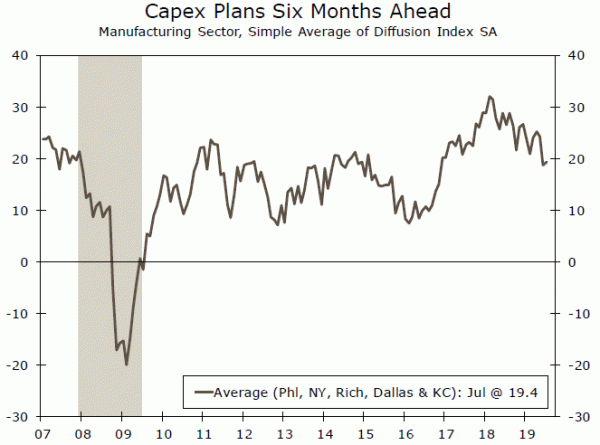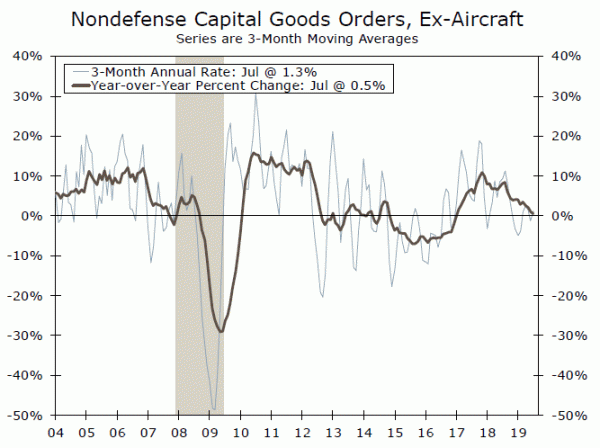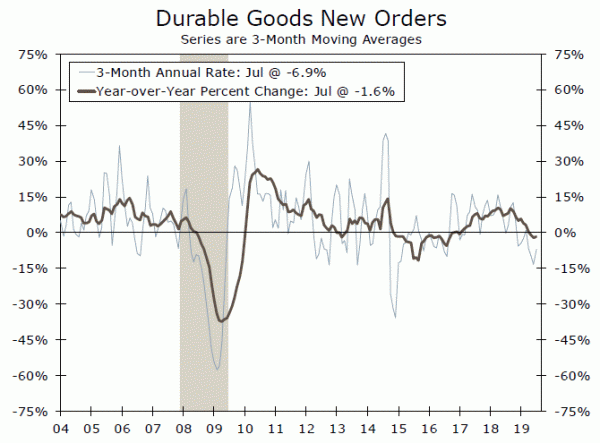Taking into account the jump in the volatile aircraft component and downward revisions to prior months’ data, the 2.1% increase in orders is unimpressive. Further clouds over trade policy will keep the capex outlook dim.
Aircraft Boost and Revisions Take Shine off of Headline Gain
Today’s figures for durable goods orders, which cover the month of July, are dated more than usual. The threat of tariffs on remaining imports from China, most of which are for consumer goods, did not come until August 1. Heading into the recent escalation, durable goods orders were improving. Orders for July were up 2.1%, which was the largest monthly gain in almost a year. The solid headline, however, misleads the overall state of capital spending.
Despite Boeing’s issues with the 737 MAX, the company continues to log orders for other models. In July, Boeing booked 31 new orders, which translated to nearly a 50% jump in the value of nondefense aircraft and parts when compared to June. Orders for motor vehicles and parts rose 0.5%, but with dealer inventories still near cycle highs, that pace is unlikely to be sustained. Excluding transportation, orders fell 0.4%, which was worse than expected.
Nondefense capital goods orders excluding aircraft, a bellwether for equipment investment, managed a 0.4% gain. While technically that was stronger than consensus expectations for July, it came amid a meaningful downward revision to June, and leaves the level of core orders down slightly from where it reportedly stood a month ago. On a three-month average annualized basis, core orders are increasing a meager 1.3%.
More immediately, the prospects for equipment spending to eke out a modest gain in Q3 are quickly falling. Nondefense capital goods shipments, which feed into the BEA’s estimates for equipment spending, retreated 3.0% in July. What’s more, what looked to be a solid starting point for the quarter, with shipments initially reported to have risen 1.5% at the tail end of Q2, is weaker with June shipments revised down to a 0.9% gain.
Outlook Dimming
The ramped up trade rhetoric over the past month is unlikely to help the capex picture anytime soon. Of the four PMIs released thus far for August, only the New York Fed’s Empire State Manufacturing Survey showed a pickup in activity. The Kansas City Fed’s survey reported manufacturing activity in the region contracted for a second straight month, while the U.S. Markit Manufacturing PMI slipped into negative territory for the first time since September 2009.
Meanwhile, capital spending plans at manufacturers continue to edge lower as global growth slows further and trade uncertainty lingers. While spending plans according to all the regional PMIs are not nearly as low as the levels registered during the mid-cycle slowdown of 2015-2016, the pullback suggests investment is likely to remain constrained in the coming months. The upshot is that capex momentum is quickly fading.















